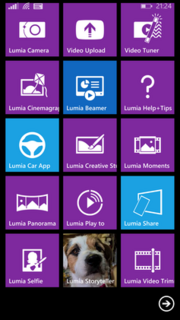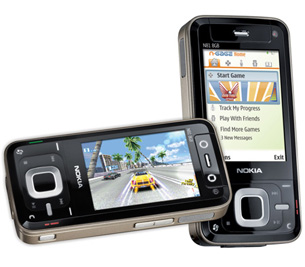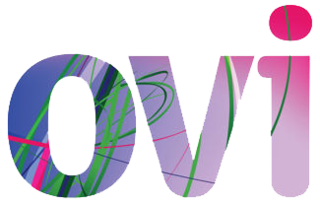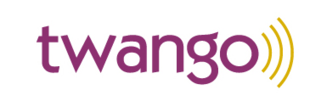 W
WAccounts & SSO, accounts-sso, or lately gSSO is a single sign-on framework for computers.
 W
WClub Nokia was a mobile internet digital distribution portal, similar to an App Store, operated by Nokia to provide special offers, paid-for ringtones, picture messages and game content directly to members. Following resistance from its mobile operator customers, Nokia partially closed the service and the brand became solely a consumer service and loyalty portal.
 W
WNokia Download!, originally Nokia Catalogs, was a mobile application for Nokia devices that allowed access to digitally distributed media content. Catalogs/Download! came preloaded on most Symbian S60 smartphones from Nokia, as well as some later Series 40 feature phones. Most of the content was paid.
 W
WHERE Technologies is a Netherlands-based company that provides mapping and location data and related services to individuals and companies. It is majority-owned by a consortium of German automotive companies and American semiconductor company Intel whilst other companies also own minority stakes. Its roots date back to U.S.-based Navteq in 1985, which was acquired by Finland-based Nokia in 2007. HERE is currently based in The Netherlands.
 W
WHERE WeGo is a web mapping and navigation service, operated by Here Technologies. Originally developed by Nokia as HERE Maps, the mapping software application was first released for Windows Phone and the World Wide Web in 2013 as a revamped version of Nokia Maps. The Here Maps application was then released for the Android platform on 10 December 2014 and later for iOS on 11 March 2015, and the name was changed to Here WeGo in July 2016. It is also the default maps service provider for the Amazon Fire tablets and smartphone.
 W
WLumia imaging apps are imaging applications by Microsoft Mobile and formerly by Nokia for Lumia devices built on the technology of Scalado. The Lumia imaging applications were notably all branded with "Nokia" in front of their names, but after Microsoft acquired Nokia's devices and services business the Nokia branding was superseded with "Lumia", and often updates included nothing but name changes, but for the Lumia Camera this included a new wide range of feature additions. Most of the imaging applications are developed by the Microsoft Lund division. As part of the release of Windows 10 Mobile and the integration of Lumia imaging features into the Windows Camera and Microsoft Photos applications some of these applications stopped working in October 2015.
 W
WMaliit is an input method framework for computers with particular focus on implementing virtual keyboards. Designed mostly for touchscreen devices, Maliit allows the inputting of text without the presence of a physical keyboard. More advanced features such as word correction and prediction are also available.
 W
WMicrosoft Math Solver, is an entry-level educational app that solves math and science problems. Developed and maintained by Microsoft, it is primarily targeted at students as a learning tool. Until 2015, it ran on Microsoft Windows. Since then, it has been developed for the web platform and mobile devices.
 W
WMicrosoft Software Updater is a Windows and OS X based application launched in 2006, that enables customers to update and recover their mobile device firmware of a S40 or S60 or Lumia device from any Internet enabled access point. To avoid data loss users are prompted with on-screen advice on how to safely update their device.
 W
WMixRadio was an online music streaming service owned by Line Corporation. The service was first introduced by Nokia in 2011 as Nokia Music for Windows Phone, serving as a successor to Nokia's previous Nokia Music Store/Comes with Music/Ovi Music Store initiatives, which was based on the LoudEye/OD2 platform. After its acquisition of Nokia's mobile phone business, the service was briefly maintained by Microsoft Mobile Oy before it was sold to Japanese internet company Line Corporation in 2015. Following the acquisition, MixRadio expanded to Android and iOS in May 2015.
 W
WMOSH was a user defined distribution channel for mobile content initiated by Nokia. The name "MOSH" comes from "Mobilize and Share". The channel could have been used to both download and upload various content for mobile phones or other platforms. File types that were handled were: audio, images, applications, games, videos, documents.
 W
WThe N-Gage service was a mobile gaming platform from Nokia that was available for several Nokia smartphones running on S60 (Symbian). N-Gage provided numerous games with 3D graphics into an application featuring online and social features. It takes its name from the original 2003 N-Gage gaming device, which it succeeded.
 W
WNokia PC Suite is a discontinued software package used to establish an interface between Nokia mobile devices and computers that run the Microsoft Windows operating system. Its first release was in 1997, originally called Nokia Data Suite. It was replaced by Nokia Suite and integrated into the Ovi service suite.
 W
WNokia Suite is an application for Nokia users to connect their devices with Microsoft Windows. The service was originally developed by Nokia but was subsequently taken over by Microsoft Mobile.
 W
WOvi by Nokia was the brand for Nokia's Internet services. The Ovi services could be used from a mobile device, computer or via the web. Nokia focused on five key service areas: Games, Maps, Media, Messaging and Music. Nokia's aim with Ovi was to include third party developers, such as operators and third-party services like Yahoo's Flickr photo site. With the announcement of Ovi Maps Player API, Nokia started to evolve their services into a platform, enabling third parties to make use of Nokia's Ovi services.
 W
WSports Tracker, earlier Nokia Sports Tracker was originally a software tool for Symbian Series 60 phones that allowed its user to track their route, speed, timings and energy expenditure, while engaging in a sport activity such as running, jogging or cycling.
 W
WTwango was an online media sharing site that supported multiple file types such as photos, video, audio, and documents. Founded in 2004 by Jim Laurel, Philip Carmichael, Randy Kerr, Serena Glover and Michael Laurel in Redmond, Washington, it provided users a means of repurposing their media, including sharing, editing, organizing and categorizing. In addition, Twango saved all the original media and its metadata. Non-members were free to browse the site, however only members could upload media to the site. Sign up for a basic account was free, and provided 250 megabytes of upload bandwidth a month.
 W
WWidSets is a mobile runtime technology, and a mobile service powered by the said technology, based on the Java MIDP 2.0 platform, from the Finnish mobile company Nokia. It is both a widget engine and a widget deployment service where mini-applications called widgets can be uploaded to WidSets servers to be compiled and then automatically deployed to MIDP 2.0 compliant mobile phones running the WidSets client software. The widgets are created using Extensible Markup Language (XML), Cascading Style Sheets (CSS), and Helium scripting language. Widsets is a combined application and service that is similar to what a widget does on a desktop PC, on a wide variety of mobile phones. WidSets are micro-applications intended to perform a single function. WidSets, like widgets, generally rely on some kind of web service to provide information to the user.